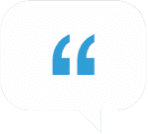ALERT: NO CAFFEINE AFTER NOON HOW-TO
ALERT:
NO CAFFEINE AFTER NOON HOW-TO
Before you start the Sleep30® Challenge by Sleep Number: a quick, but important, note about caffeine.
One of the first Sleep30® Challenge participants was a woman named Mary, who loved coffee so much she had a tattoo of a latte on her arm. You may feel like Mary. We want to be very clear: We’re not saying coffee or caffeine is bad. We’re saying the time of day at which you consume it absolutely affects your sleep quality. We’re here to help you sleep smarter while still enjoying caffeine.
WHY SHOULD I?
Why does it matter what time you drink your last caffeinated beverage? First of all, the caffeine molecule competes directly with adenosine, an important neurotransmitter connected to sleep. Furthermore, it takes your body 8 hours to metabolize caffeine. So if you drink a latte or a caffeinated soda at 3 p.m., half the caffeine from that beverage is still circulating in your body at bedtime.
If you're drinking caffeine after noon, you're all but guaranteeing you won't get quality sleep. You may be so tired that you still fall asleep, but caffeine is going to disrupt your sleep and wake you up and/or disrupt your sleep cycles so you wake up more groggy.
Bean There: Sleep Number data shows SleepIQ®; sleepers who drink caffeine late in the evening are least restful and have the highest average heartrates than those who don’t.*** We’re here to help you.
CAFFEINE AFTER NOON = JUNK SLEEP
Don't worry — your morning coffee can still be part of a healthy sleep life. We wouldn't dream of taking away this important (and delicious) daily ritual. However, you’ll have to reduce and eventually eliminate caffeine consumption after noon over the next 30 days, starting on day one. You can always add it back in after the challenge ends. (But we hope you'll feel so much better without it that you don't.)
If this sounds daunting, know that 74% of Sleep30® Challenge participants improve or change a poor sleep habit during the program*, and eliminating caffeine after noon was the most popular bad habit broken. If they can do it, you can do it, too!

THE SLEEP30® CHALLENGE GUIDE TO SENSIBLY QUITTING CAFFEINE AFTER NOON
We don't recommend going cold turkey. The side effects of caffeine withdrawal aren't dangerous, but they may be uncomfortable and disruptive. If you gradually make changes, then it's very doable.
Goal: To eliminate caffeine after noon in 10–14 days
WHAT YOU’LL NEED
- Small notebook or app for tracking caffeine consumption
- Non-caffeinated replacement beverages like decaf tea, hot apple cider, juice, etc.
STEP 1: ASSESS YOUR CAFFEINE INTAKE
For the first three or four days, track all your caffeine consumption in a small notebook, on an app, or in your sleep journal. Include caffeine from less obvious sources such as medications, chocolate and other foods. There are websites that offer information on caffeine amounts.
STEP 2: BEGIN ELIMINATING CAFFEINE
Your elimination plan is individual to you and depends on your afternoon caffeine consumption. If you only have a single cup of coffee at 2:30 p.m., then you can start by making a goal to finish it by 1:30 p.m. Try that for a few days, gradually working your way to a noon end time. You should be down to noon in 10-14 days. If you have multiple caffeinated beverages throughout the day, then you want to start by eliminating the last cup of coffee or soda of the day. Skip the coffee with dessert.
STEP 3: REPLACE WITH NON-CAFFEINATED ALTERNATIVES
Your detox will be easier if you replace the caffeinated beverage with a non-caffeinated beverage you really enjoy. If your replacement choice is unsatisfying, then you're less likely to make the switch. Treat yourself! Also, staying hydrated by drinking plenty of water may reduce headaches or other withdrawal symptoms that some people experience when cutting caffeine.
STEP 4: DO LIGHT EXERCISES
If you're feeling crabby or low on energy, try taking a short walk, doing some easy yoga stretches, a one-minute plank, or even a handful of jumping jacks to hit the reset button.
STEP 5: GET SUPPORT
Tell your spouse or partner, your friends and coworkers that you’re cutting back on caffeine. Ask them to remind you to drink water, do some exercises and, most of all, remember that this too shall pass. The first few days of caffeine reduction are the worst, but it does get better.
Although it might be rough at first, having less caffeine in your system will eventually make you feel better. You'll have a clearer mind, more energy and get better sleep. You got this!
*Based on Sleep30® Challenge participants from November 2018 to March 2019.
**Participant received InnerCircleSM loyalty points for doing challenge.
*** Based on SleepIQ® data from 1/2/21 to 1/1/22 and self-reported responses of sleepers using SleepIQ® technology from 5/12/19 – 1/13/22